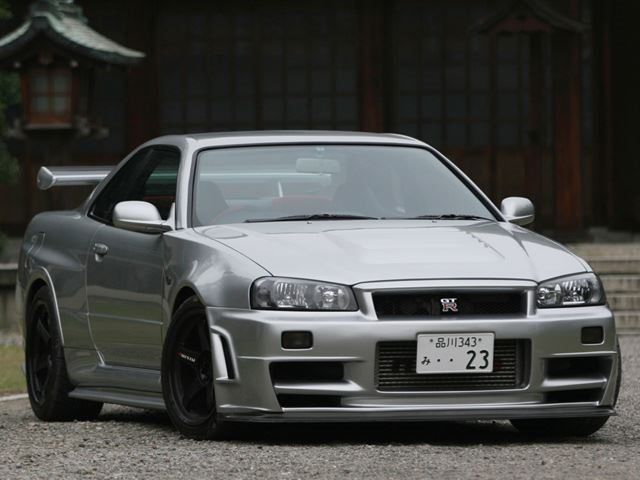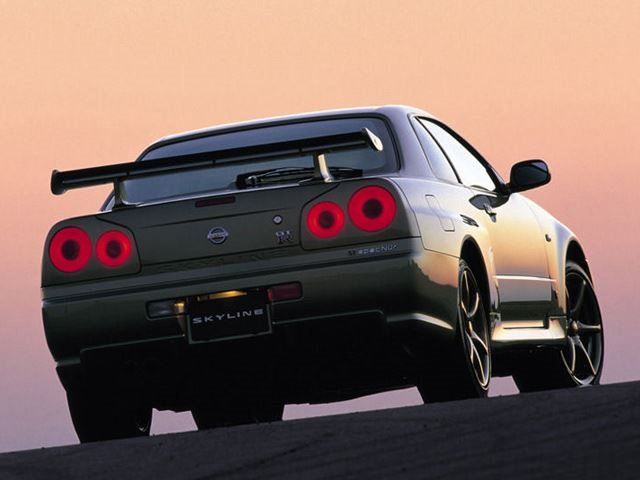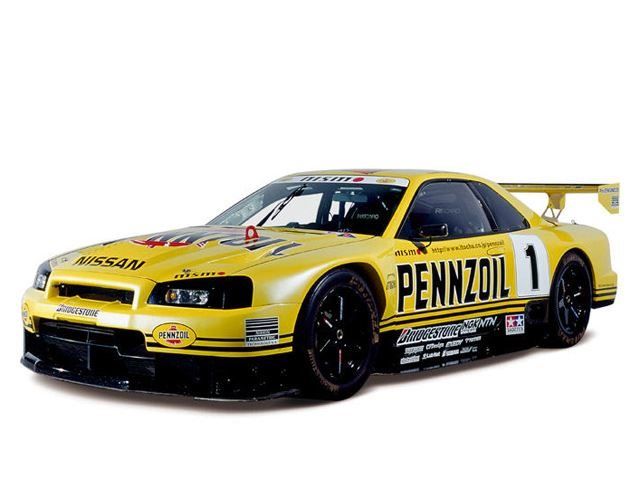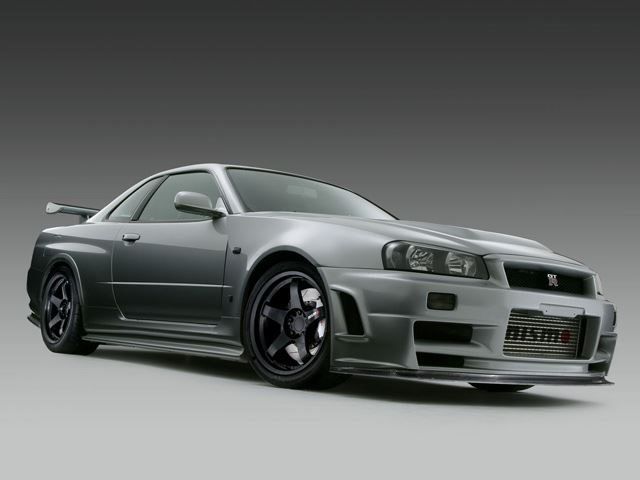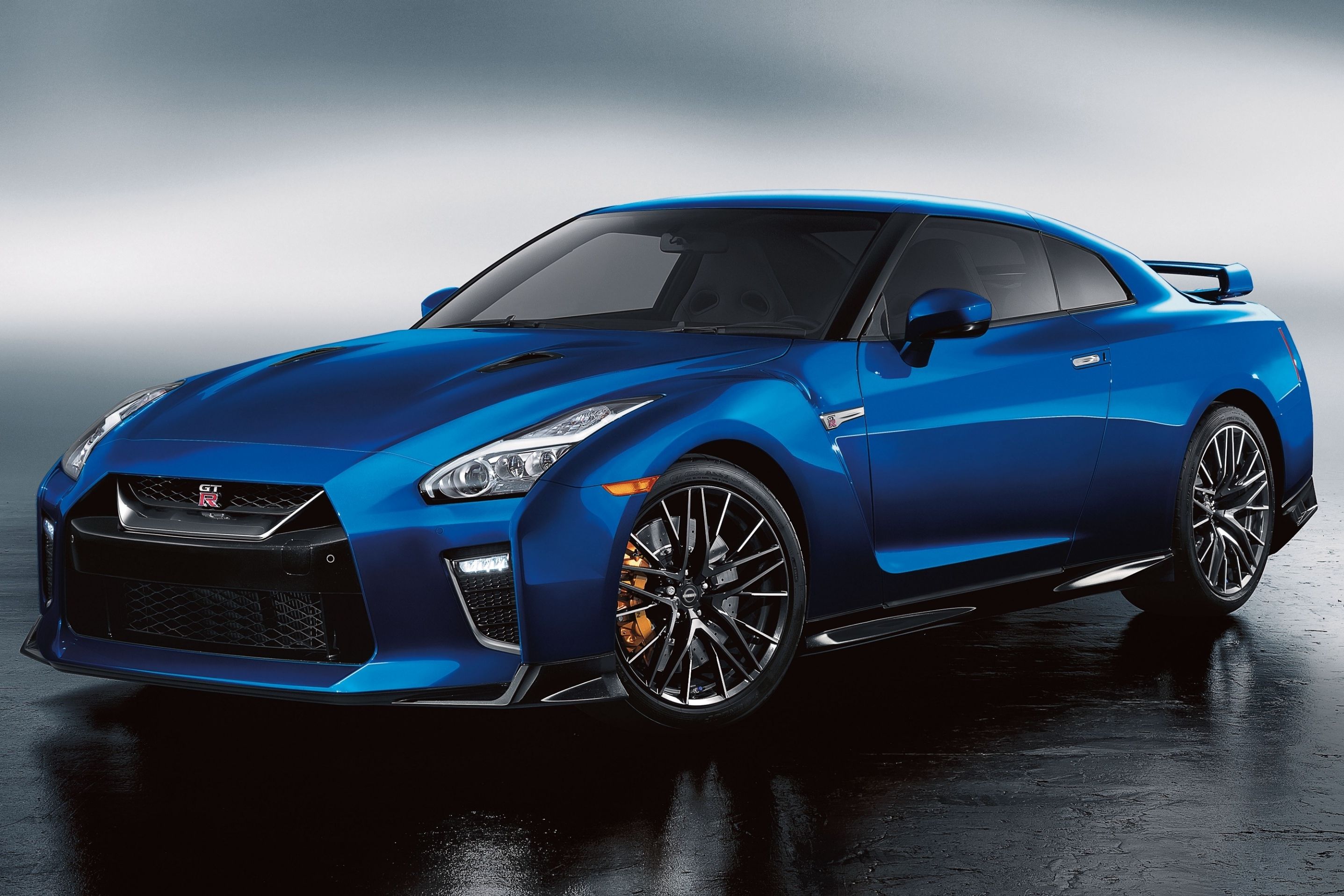
It's pretty incredible to think about. The Nissan Skyline GT-R R32 just nailed it from the get-go. Styling, engineering, performance; it had it all. Its R33 successor had big shoes to fill and it did so remarkably well. Both cars participated in motorsport and became legends on the track. So in only nine years' time, Nissan produced both the R32 and R33, successfully raced them, and created a cult-like following of sports car enthusiast that's still very much in existence today.
Not bad at all considering neither one was exported stateside and found success predominately in Japan, parts of Europe, and Australia. As we learned over the course of the past few days, Nissan essentially evolved the Skyline GT-R very methodically, if not fairly conservatively; the differences, at least in exterior styling, weren't dramatically different.
Even the 2.6-liter twin-turbo inline-six remained largely untouched as did the innovative all-wheel-drive system. This trend continued with the R34, launched in 1999. Styled by Kozo Watanabe, who designed the R33 as well, the R34 still very much looked like its predecessors, but the differences were more noticeable this time around. For starters, the R34 was shorter from front to rear, and the front overhang was also shortened. The idea here was to go back to the R32 dimensions; the R33 was a bit too oversized for some. Translation: less bulk. Just as importantly, however, was that Nissan managed to shave off weight.
The R34 benefitted from light alloy wheels - saving 17 lbs. right there – a rear diffuser made from carbon fiber, and even lightweight audio speakers. Nissan also introduced a new form of aluminum in the front wings and hood that further cut poundage. Overall, the R34's lines were sharper and more dimensionally compact than the R33. Power, interestingly, remained the same as before: 276 hp. But that was more than good enough because the R34 held the production car track record at the Nurburgring. That is, until the 996 Porsche 911 Turbo took that record later on. Anyway, at or around the time of launch, six versions of the R34 GT-R were offered:
The base GT-R, GT-R V.spec, V.spec II, V.spec Nur, GT-R M-Spec and GT-R M-Spec Nur. All of them had the same engine with the exception of the Nur versions which were powered by a Nismo-prepped N1 racing engine. Differences? The turbochargers were upgraded to larger units with ceramic blades as opposed to steel units and there was a modified crankshaft. Thing was, those changes increased lag but the turbo's durability was improved by being able to handle a bigger boost increase. In turn, tuners were able to safely increase boost up to 450 hp. Like before, the V.spec models featured additional aero parts, such as a new diffuser, and improved suspension settings.
The M-Spec cars, named for the Skyline's chief engineer at the time, Mizuno, came with "Ripple Control" dampers for better handling and heated leather seats. Speaking of which, the R34 was quite a step in terms of premium interior features. For example, a 5.8-inch LCD multifunction display in the center of the dashboard was new, showing seven separate live readings of the engine and other vehicle stats like turbocharger pressure and oil and water temperature. For those who wanted to spend a bit more bank, a Nismo multifunction display was offered which included a lap time, G-force meter as well as an increase in boost pressure.
The Nur models, however, carried on with the same stripped-down style as its R32 and R34 predecessors; no air conditioning, audio equipment, rear wiper or trunk carpet. This time though ABS remained, which was probably wise. The R34 N1 was the recipient of that aforementioned upgraded N1 engine. In case you haven't already figured it out, Nur, in this case, is short for Nurburgring. Makes sense considering the R34 GT-R was developed on that famous twisty bit of German asphalt. Funnily enough, the Nur cars, despite having an officially listed output of 276 hp, delivered around 330 hp. All told, Nissan built a total of 12,175 R34 GT-Rs by the time production ended in 2002.
However, there was an exception. Just as Nissan was phasing out production, Nismo was up to something bonkers, and it was called the Z-Tune. Here's what happened: Nismo took the 2002 GT-R V.spec II and dropped in what was referred to internally as the Z1 engine. This was the powerplant utilized in Nissan's Le Mans GT2 and GT500 race cars. Displacement was increased to 2.8-liters and, thanks to further upgraded turbos, output reached 500 hp. 0-60 mph happened in 3.8 seconds and top speed was clocked at around 203 mph. A production version was simply too tempting. With Nissan's permission, Nismo bought 20 used R34 GT-R V.specs and were stripped down, rebuilt, and repainted silver.
The chassis was stiffened and reinforced, the suspension was redesigned, and literally every other part was modified in order to accommodate that massive influx of horsepower. In the end, 19 examples were built, though two were prototypes. All were street legal and remain incredibly rare today. Whether it was on public roads or the track, where the R34 GT-R won many driver's and constructor's championships in the Japan GT Championship from 1999 until 2002, this final GT-R bearing the Skyline name was a phenomenal success. The street legal version also went on to achieve further fame thanks the "Fast and Furious" franchise.
Nissan combined everything it learned from the R32 and R33 and managed to engineer the hell out of the car. The R34 was so good at being a high-performance machine on par with the best out of Germany, that it took Nissan a full five years to debut a replacement. And it is that replacement which is still on sale today.

